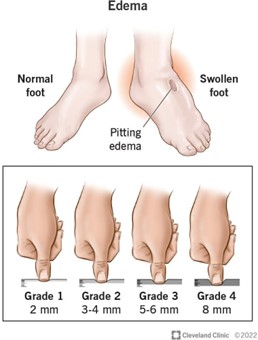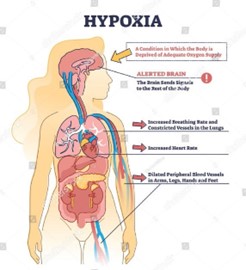At the end of shift, you are calculating intake and output on your pat lent who was admited for a non- emergent gall bladder removal. She is alert and oriented and able to recall the amount of fluid she has drank all day. You can calculate the amount of IV fluids administered. Her intake is 2500ml and her output is 1200ml from a catheter bag. You realize she is not excreting enough urine me for water she is taking in. What is the most appropriate next step to determine if she is retaining water?
Put a hat in the toilet to collect proper output.
Assess your patient’s lower extremities and lungs for fluid retention.
Educate her on the importance of writing down all fluids she is drinking.
Document the numbers anyway, there is a probable error with the intake number.
The Correct Answer is B
. Assess your patient’s lower extremities and lungs for fluid retention.
If a patient’s intake is 2500ml and her output is 1200ml from a catheter bag, and you are concerned that she may not be excreting enough urine for the amount of water she is taking in, the most appropriate next step would be to assess her lower extremities and lungs for fluid retention. This can help determine if the patient is retaining water and if further intervention is necessary.

Nursing Test Bank
Naxlex Comprehensive Predictor Exams
Related Questions
Correct Answer is B
Explanation
When someone has asthma, their lungs may produce a wheezing sound when they breathe in and out. Narrowed airways and restricted air movement through the lungs may be responsible for the wheezing sound.

Correct Answer is B
Explanation
Crackles, also known as rales, are discontinuous sounds that are typically heard during inspiration in patients with heart failure. These sounds are produced by the sudden opening of small airways and alveoli that are filled with fluid or collapsed due to pulmonary congestion. The sound can be described as similar to the sound of rubbing hair between fingers or the sound of Velcro being pulled apart.
Rhonchi are continuous, low-pitched sounds that are typically heard during expiration and are caused by the movement of air through narrowed airways, such as in patients with chronic obstructive pulmonary disease (COPD). Stridor is a high-pitched, continuous sound that is typically heard during inspiration and indicates upper airway obstruction, which can be life-threatening. Neither rhonchi nor stridor are typically heard in patients with heart failure.
Therefore, based on the patient's history and symptoms, the most likely type of breathing sound to be heard on auscultation is crackles/rales.

Whether you are a student looking to ace your exams or a practicing nurse seeking to enhance your expertise , our nursing education contents will empower you with the confidence and competence to make a difference in the lives of patients and become a respected leader in the healthcare field.
Visit Naxlex, invest in your future and unlock endless possibilities with our unparalleled nursing education contents today
Report Wrong Answer on the Current Question
Do you disagree with the answer? If yes, what is your expected answer? Explain.
Kindly be descriptive with the issue you are facing.
